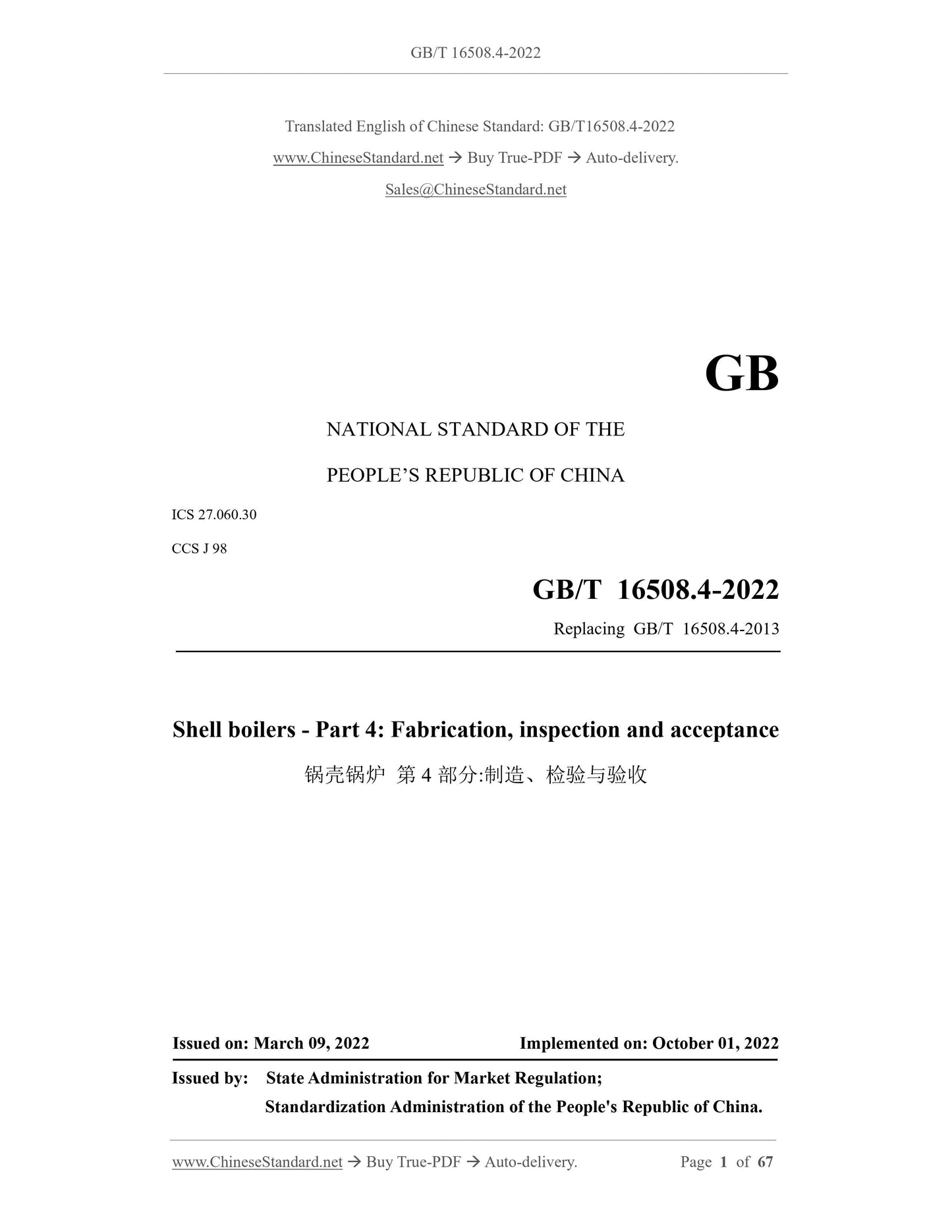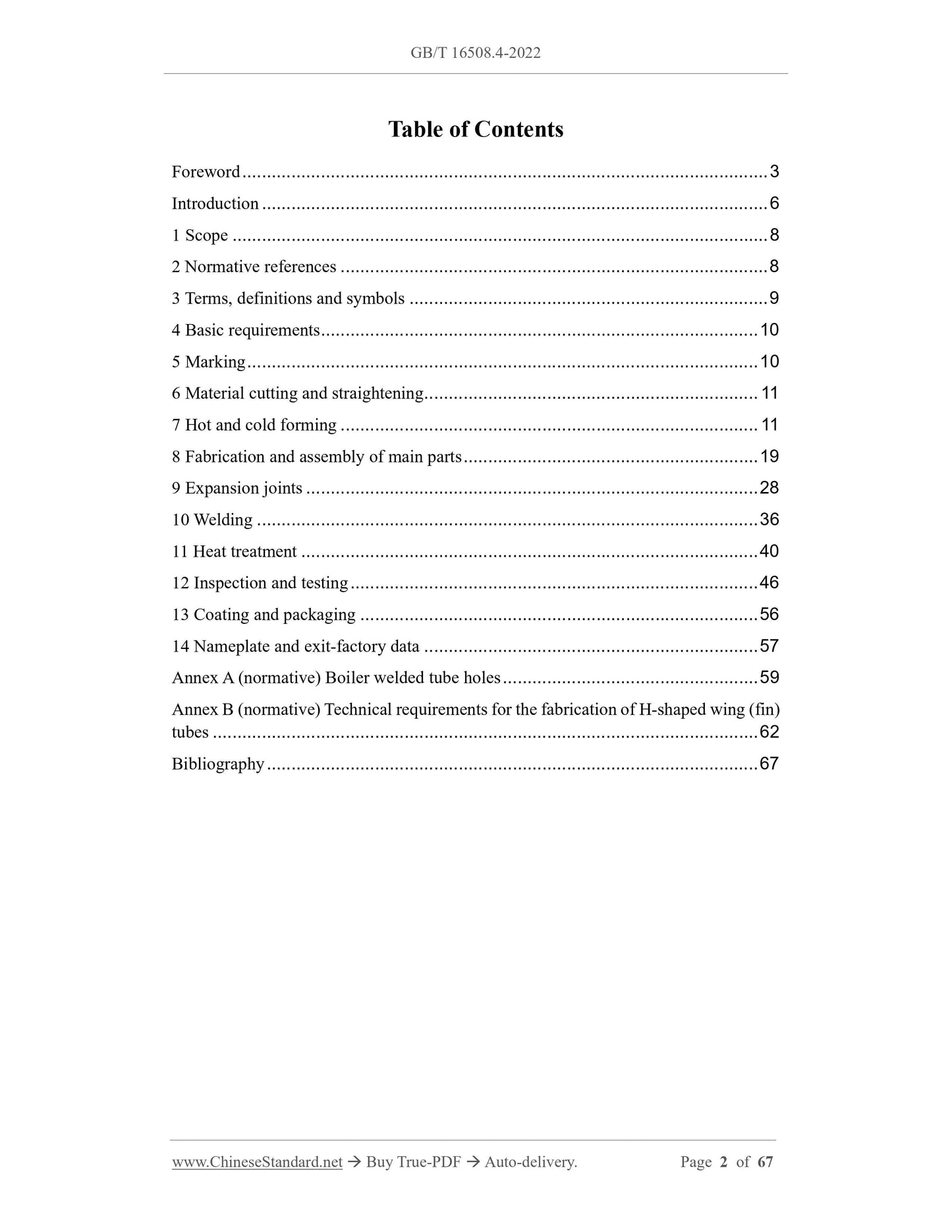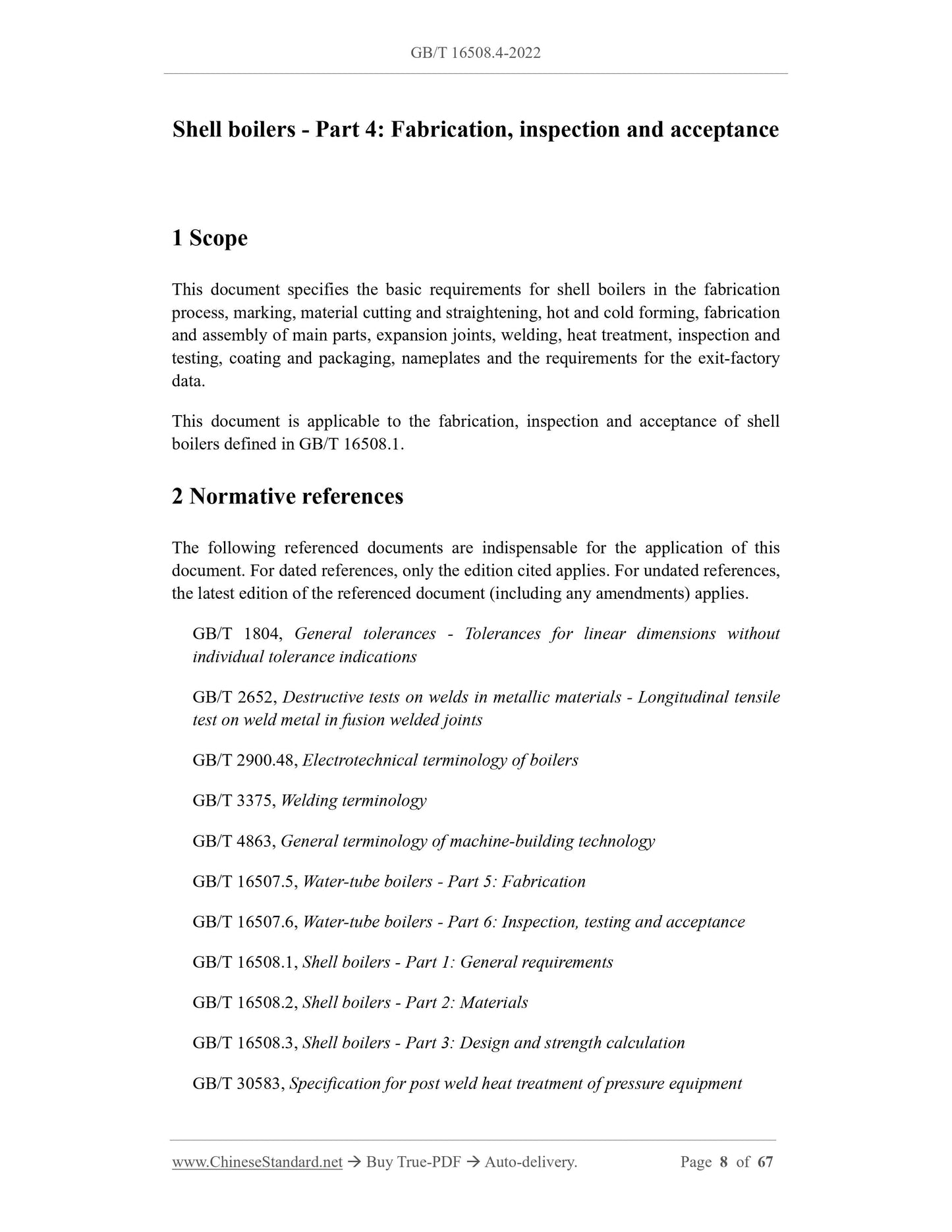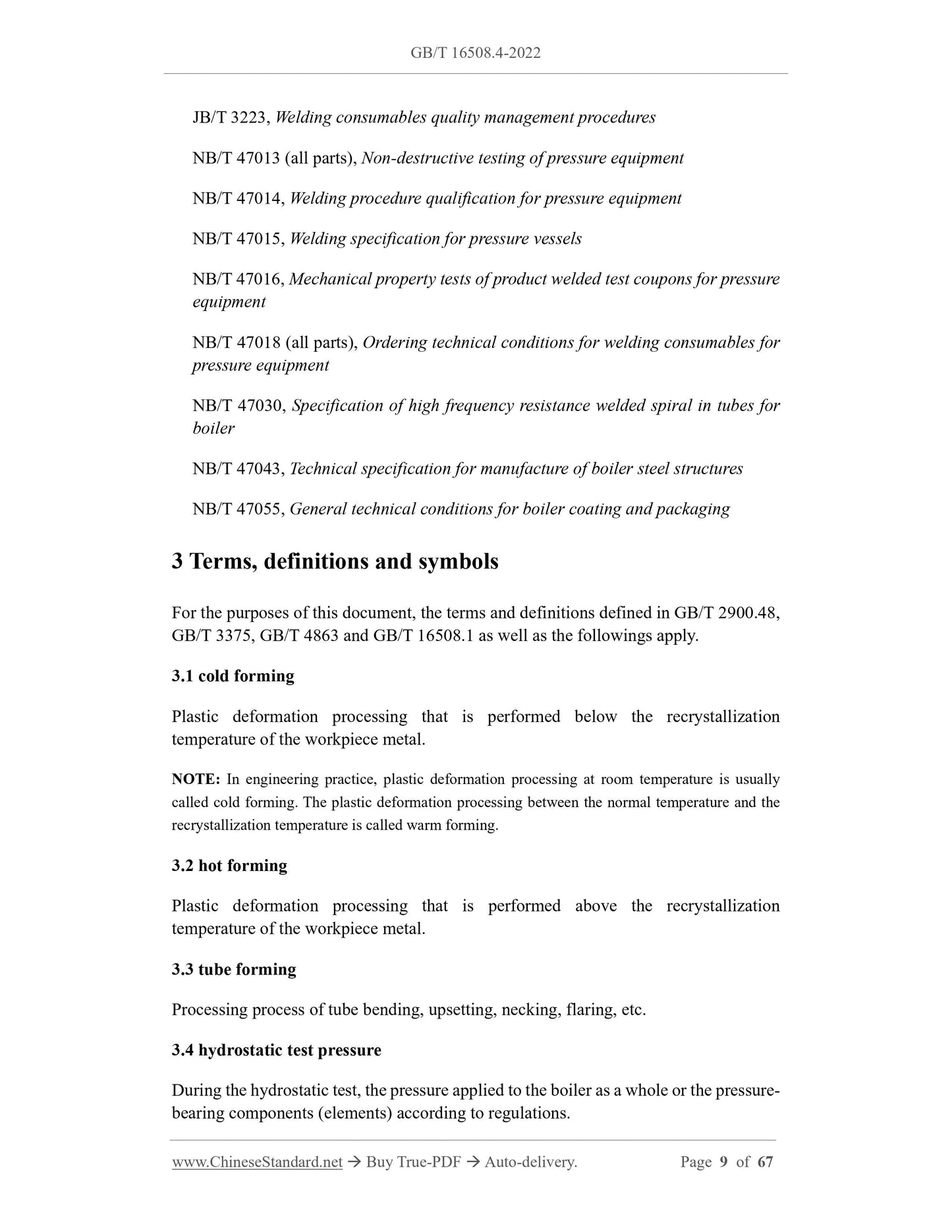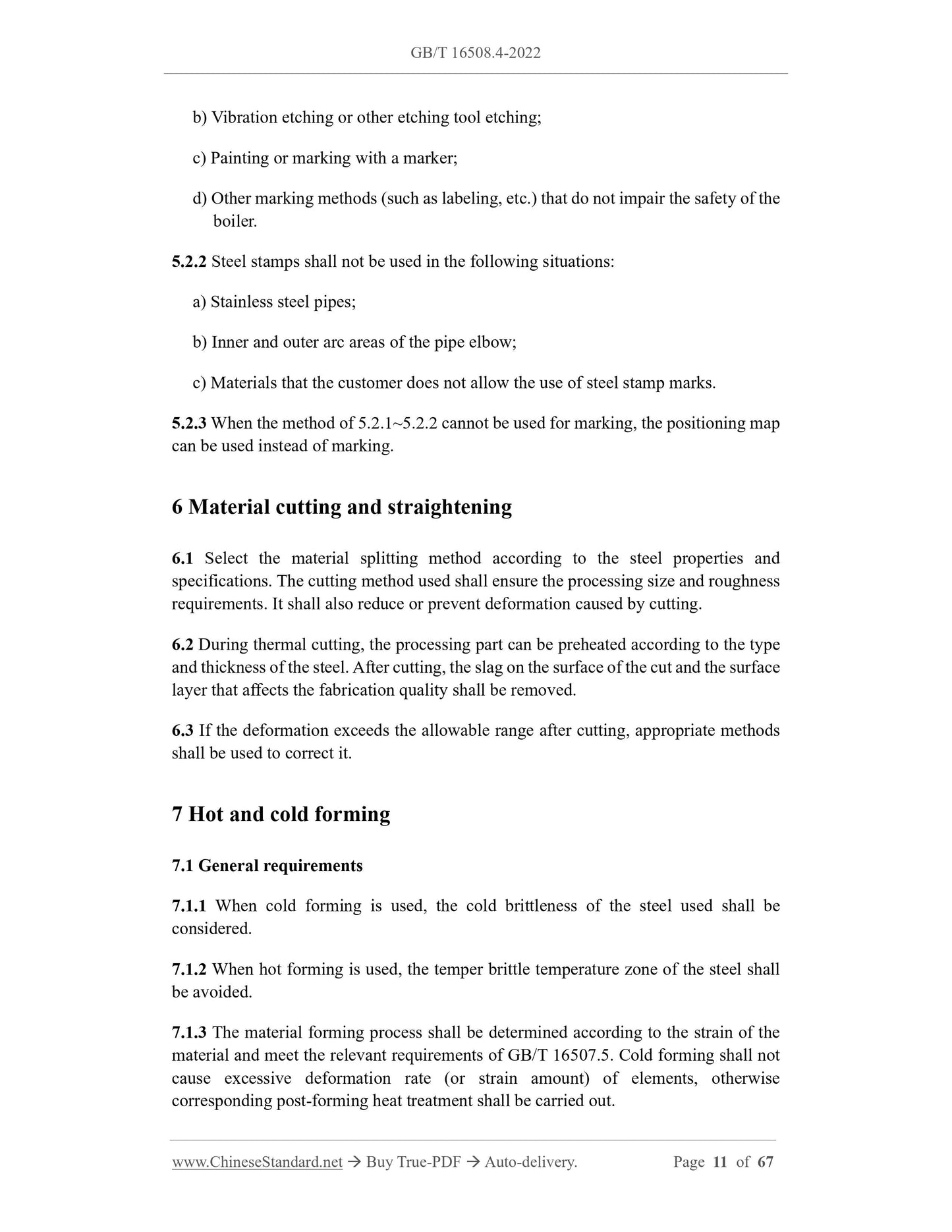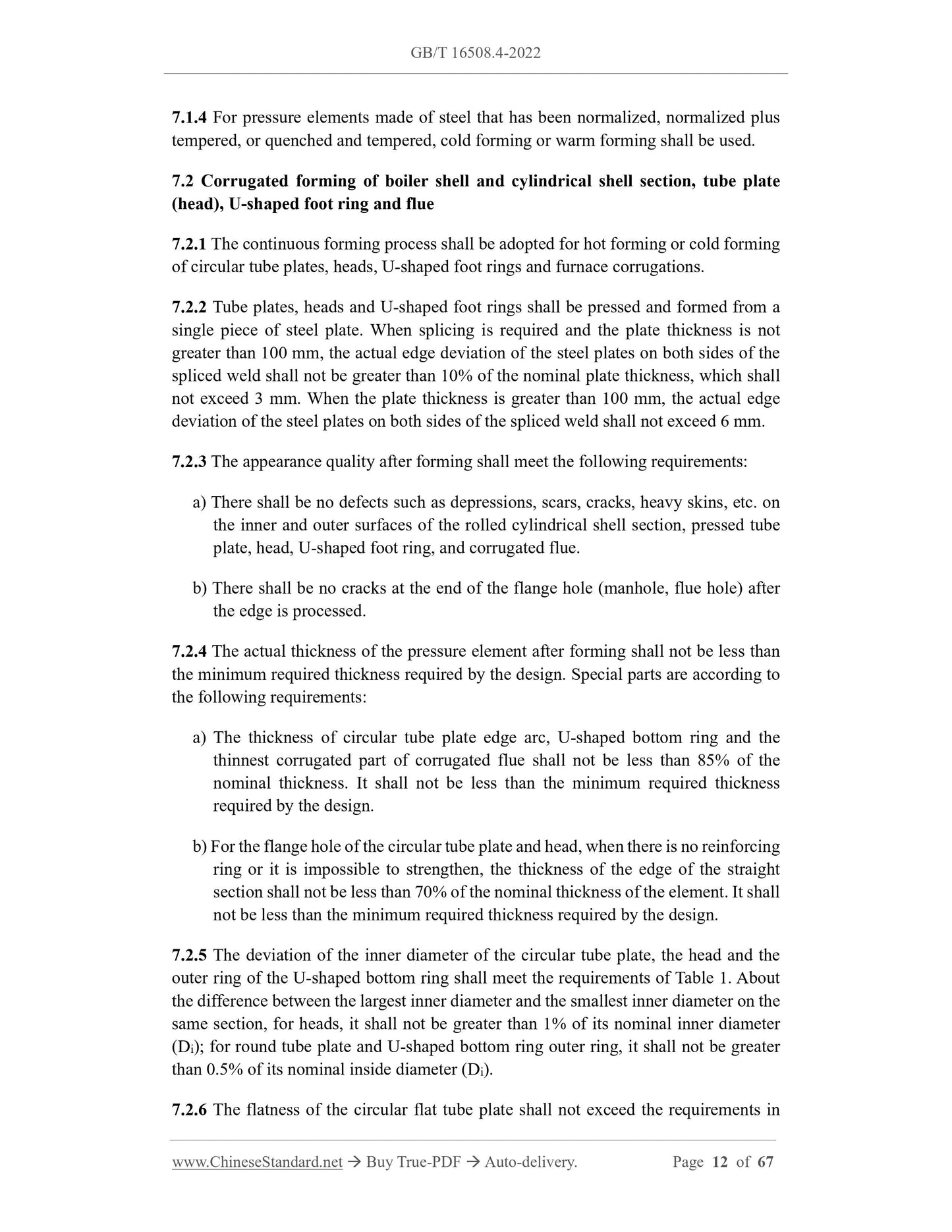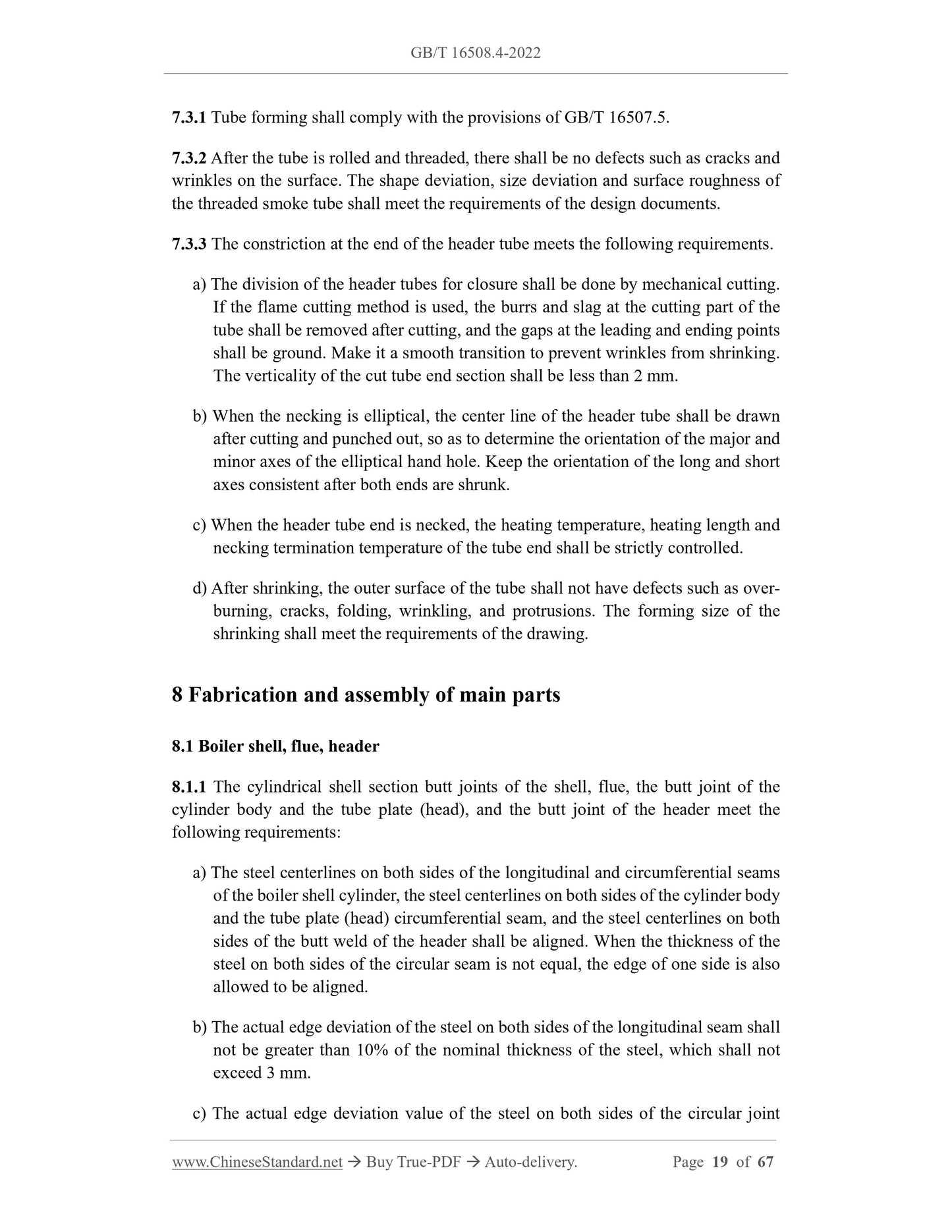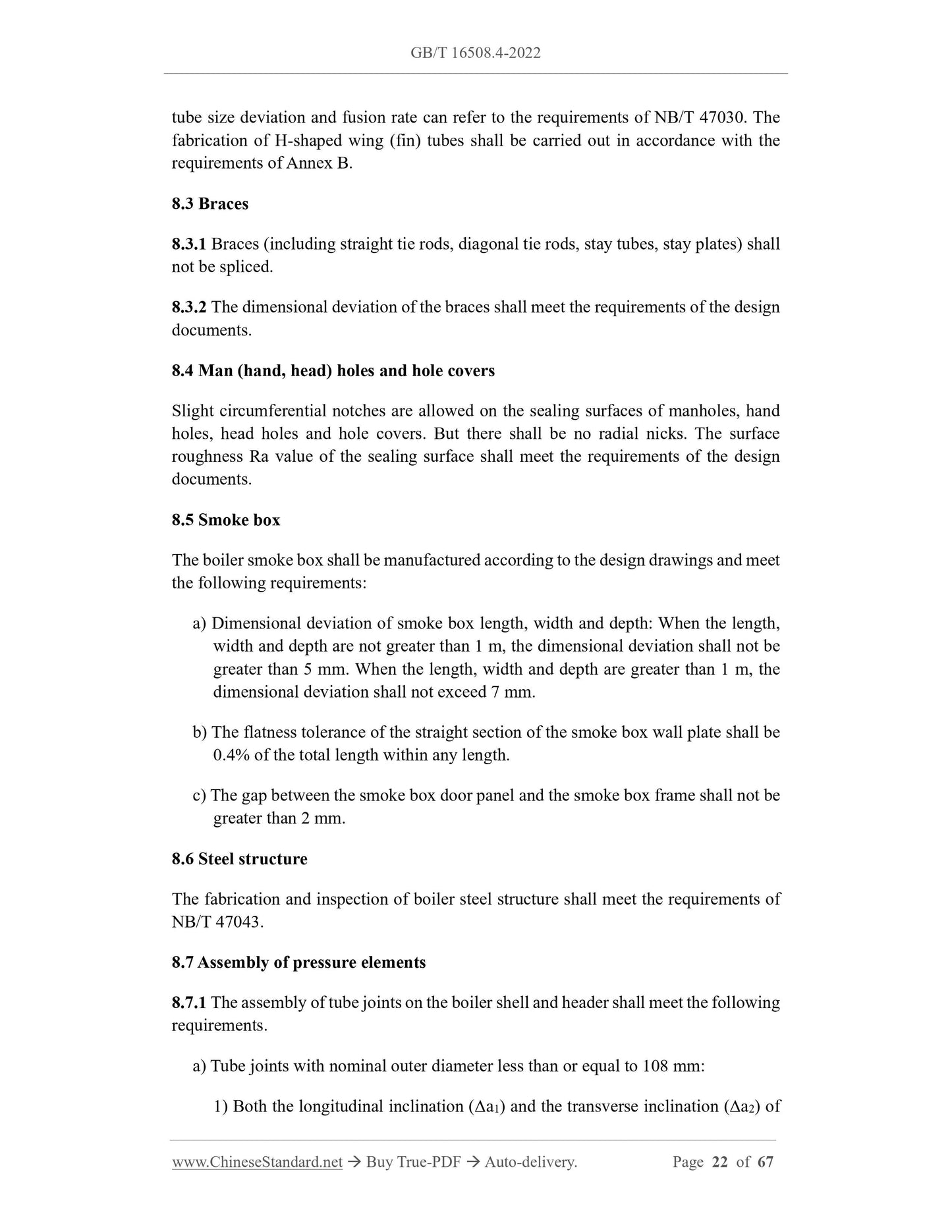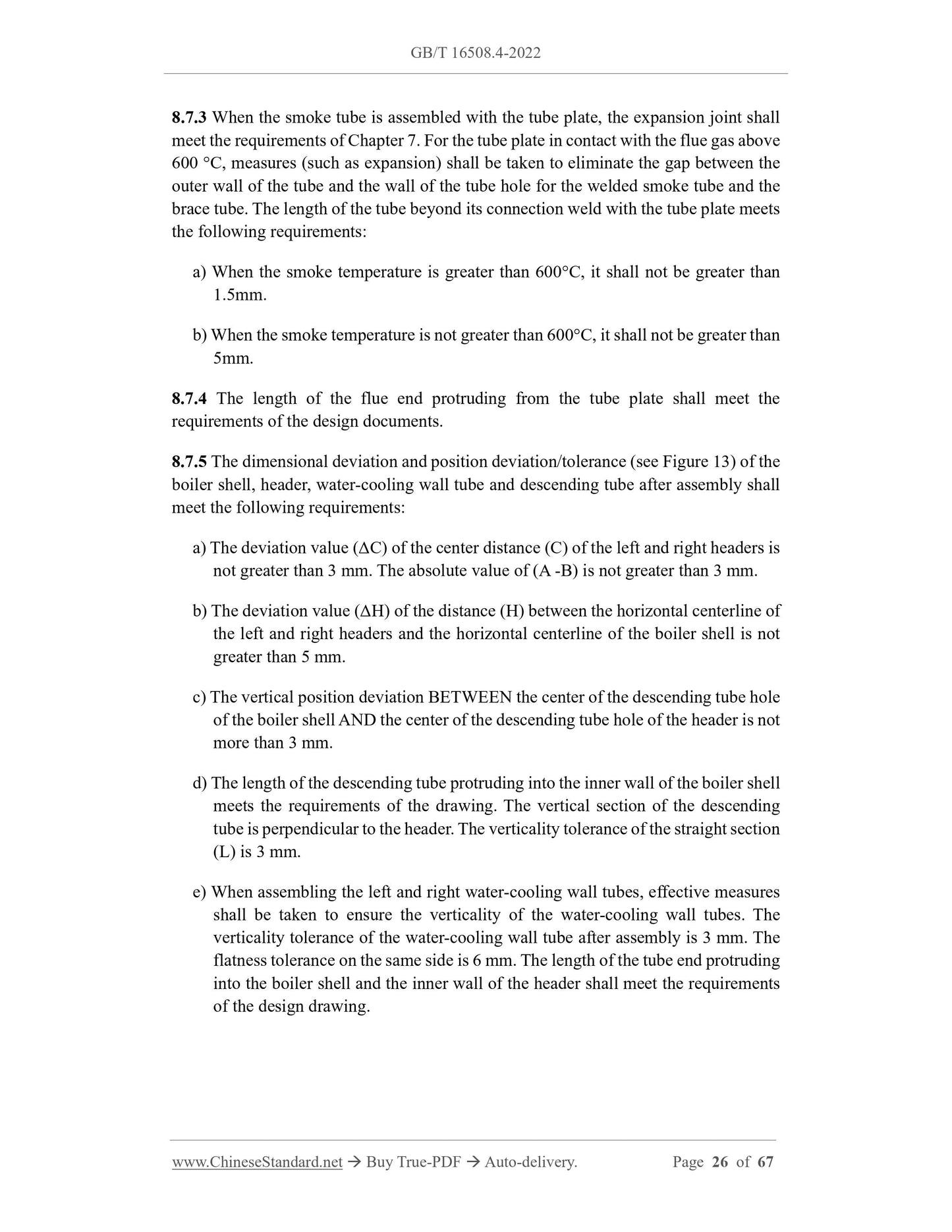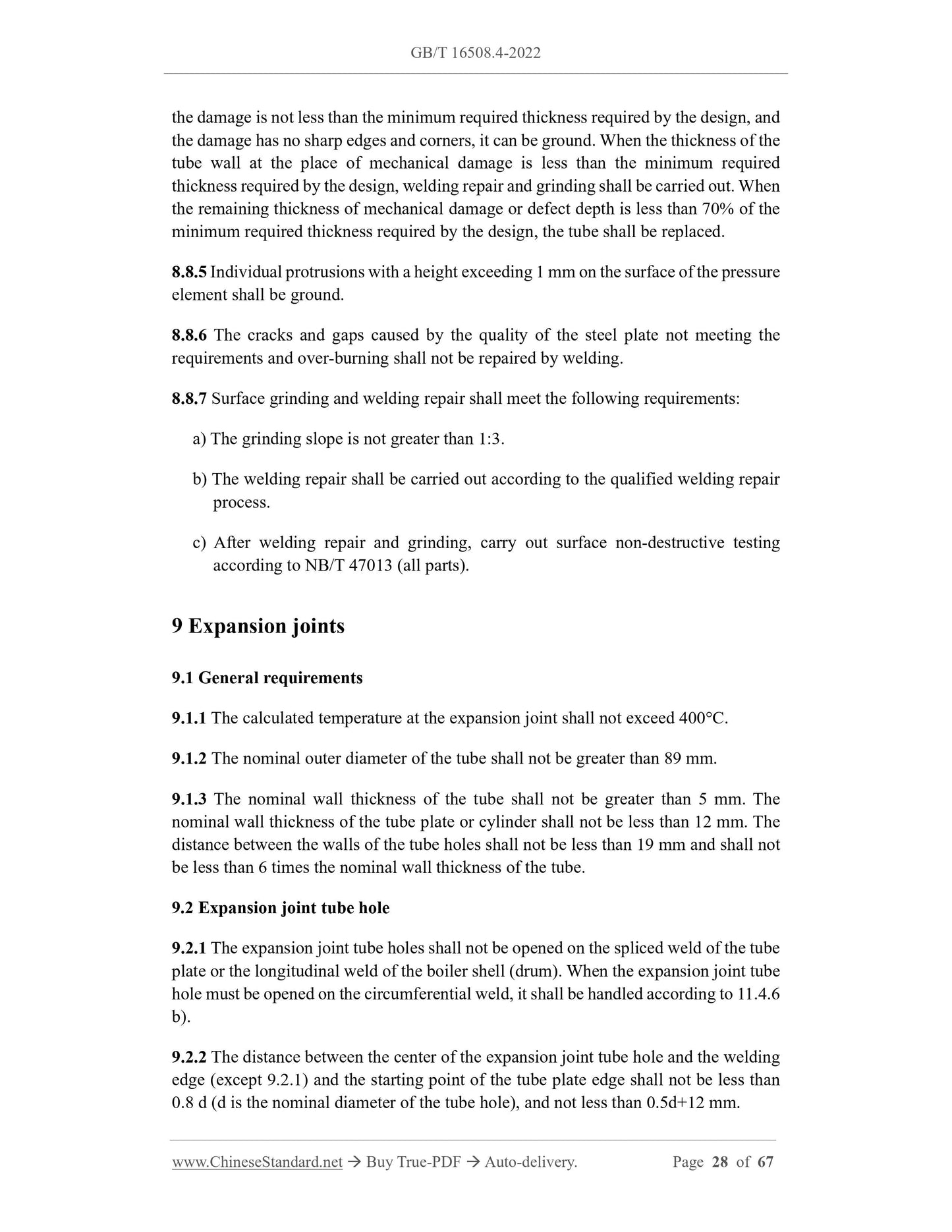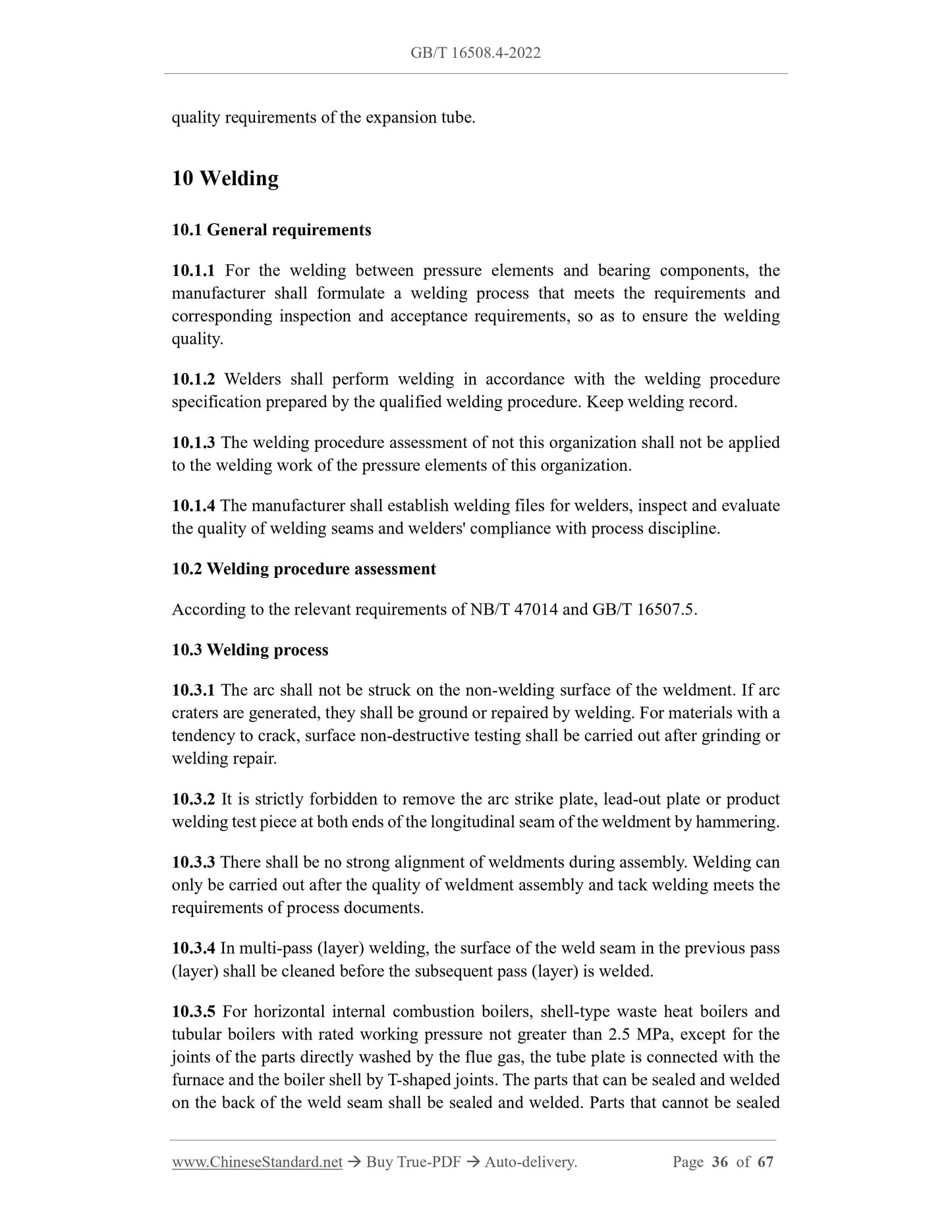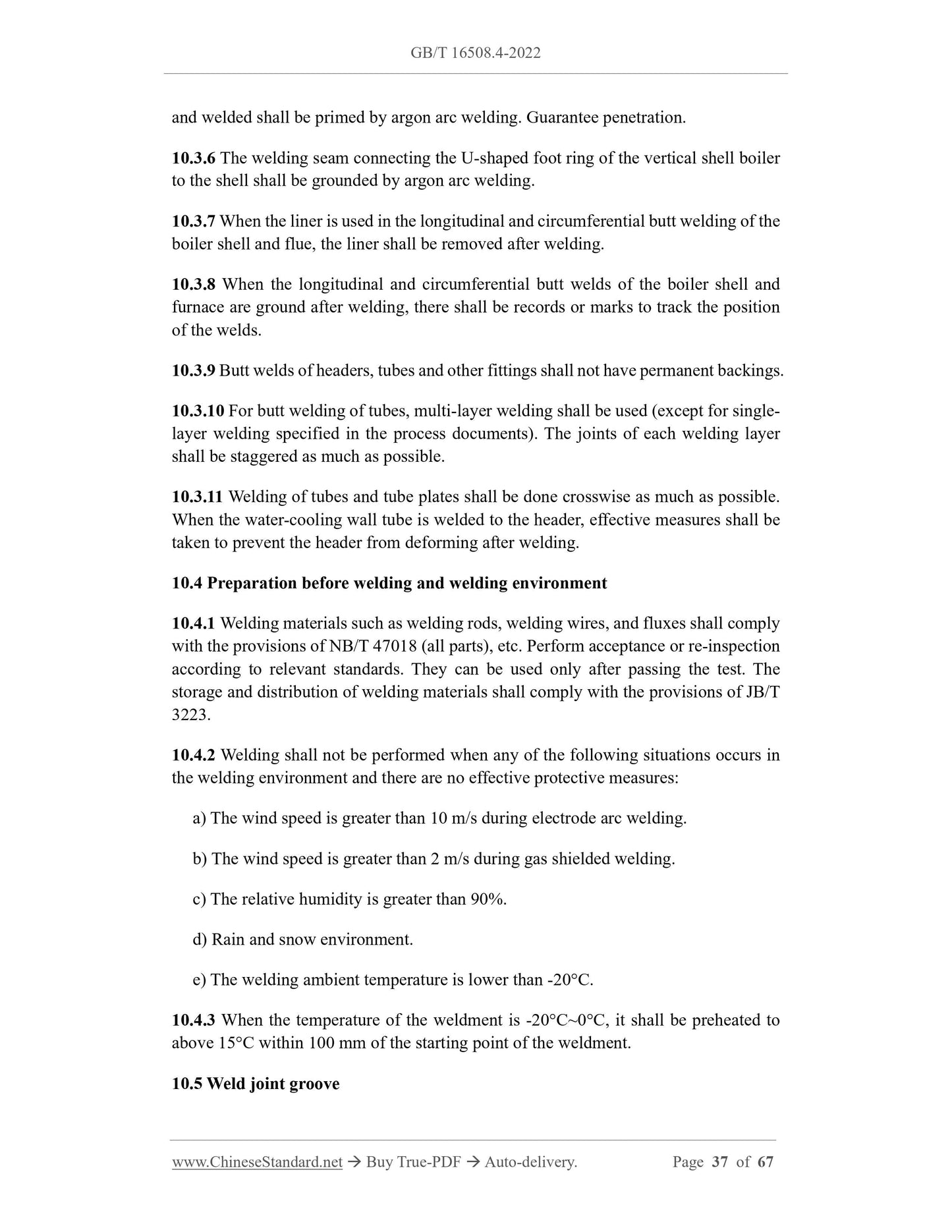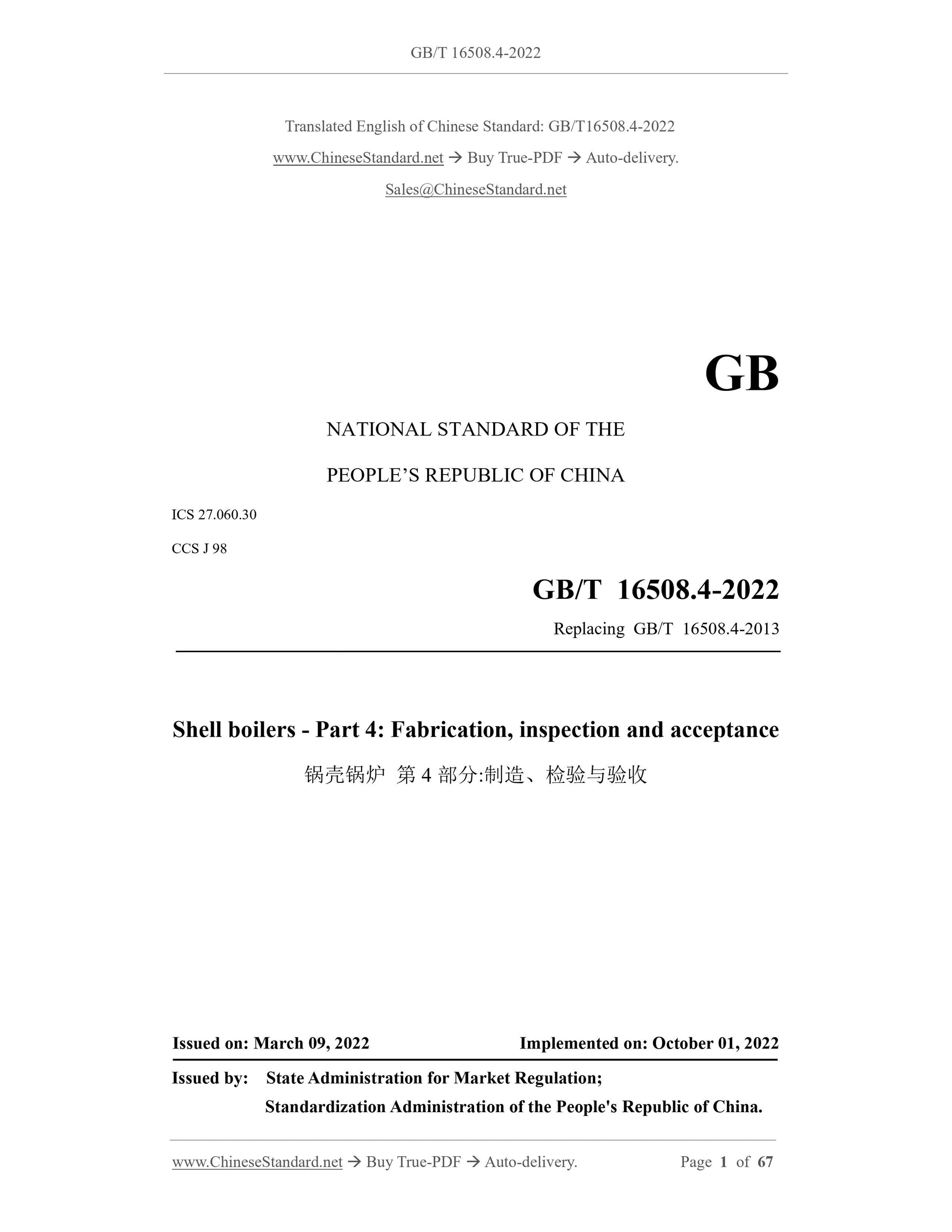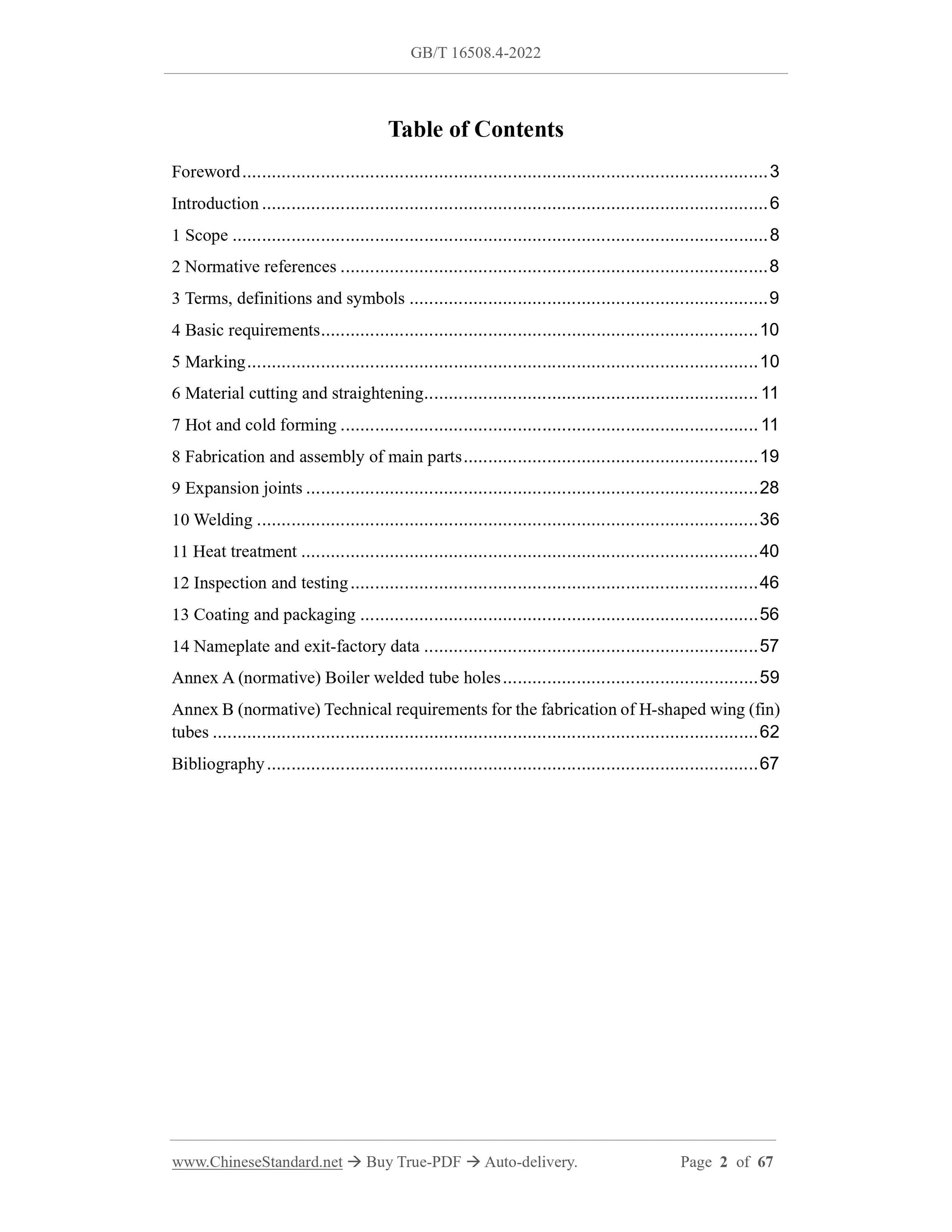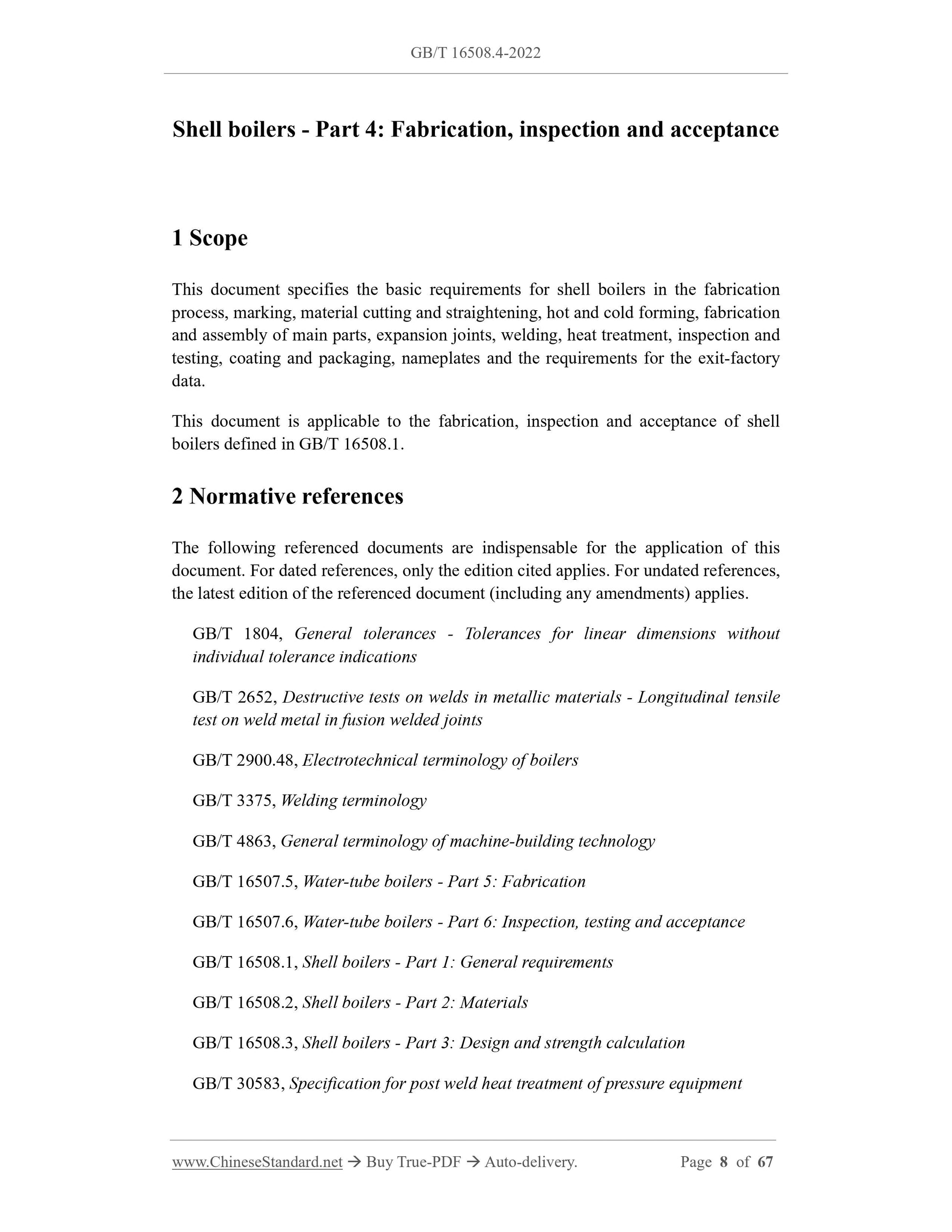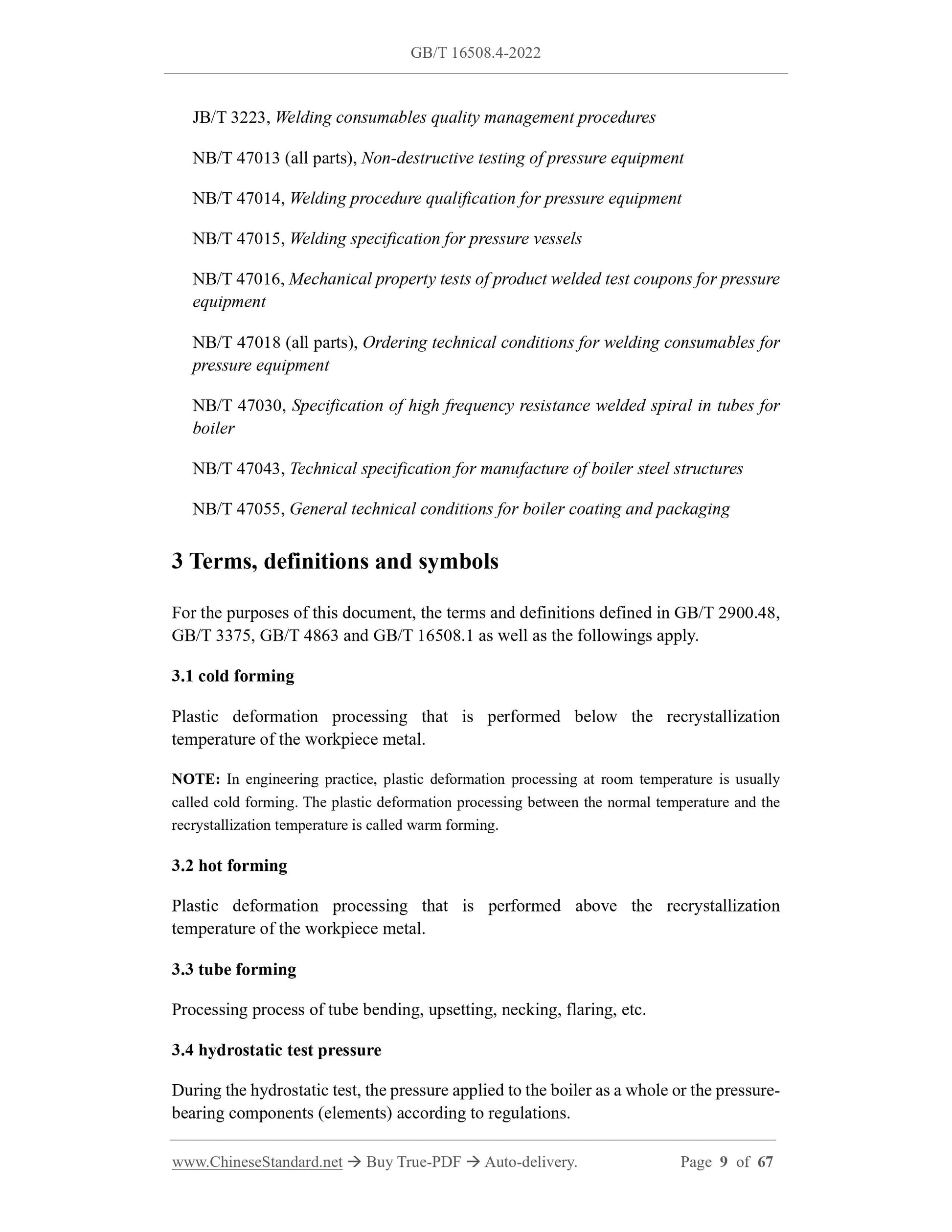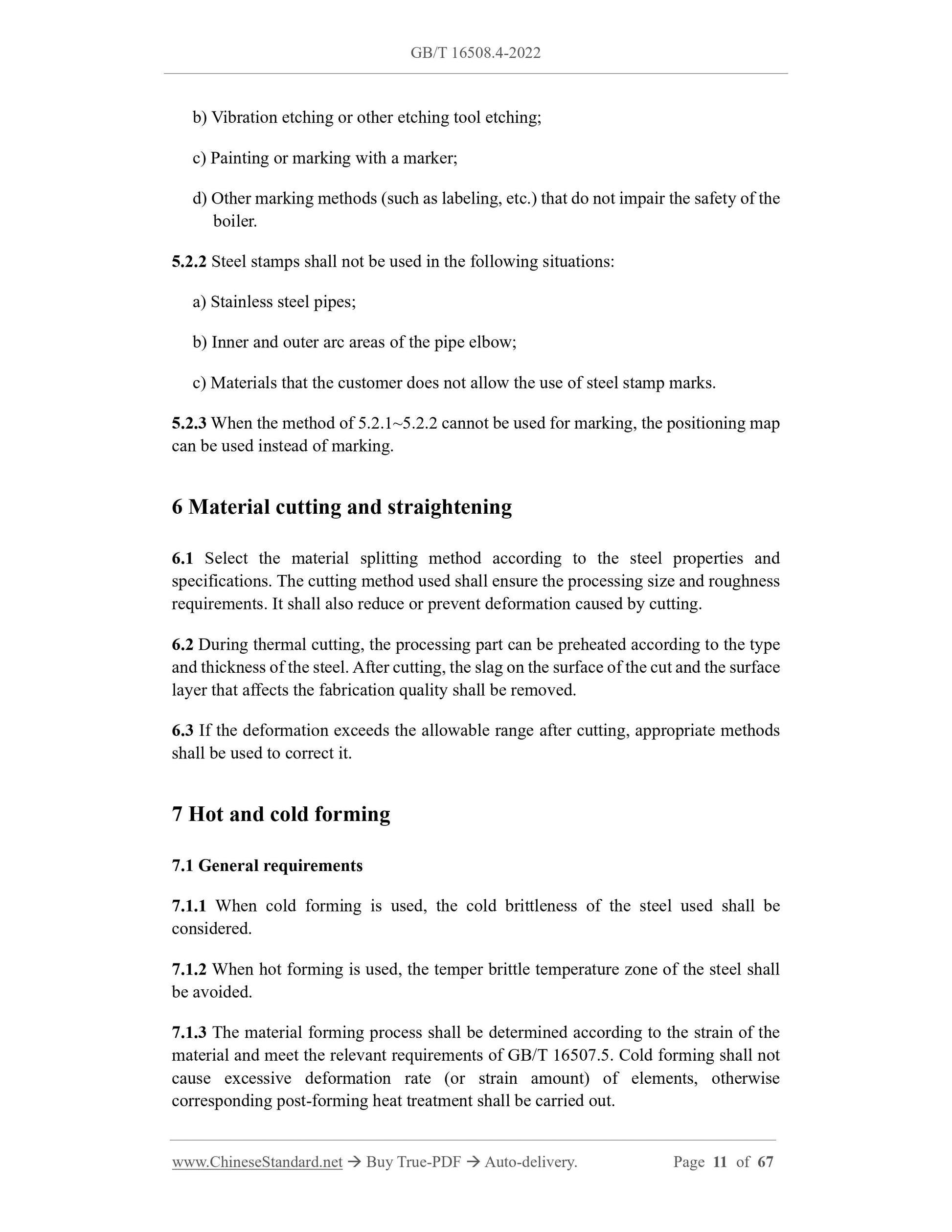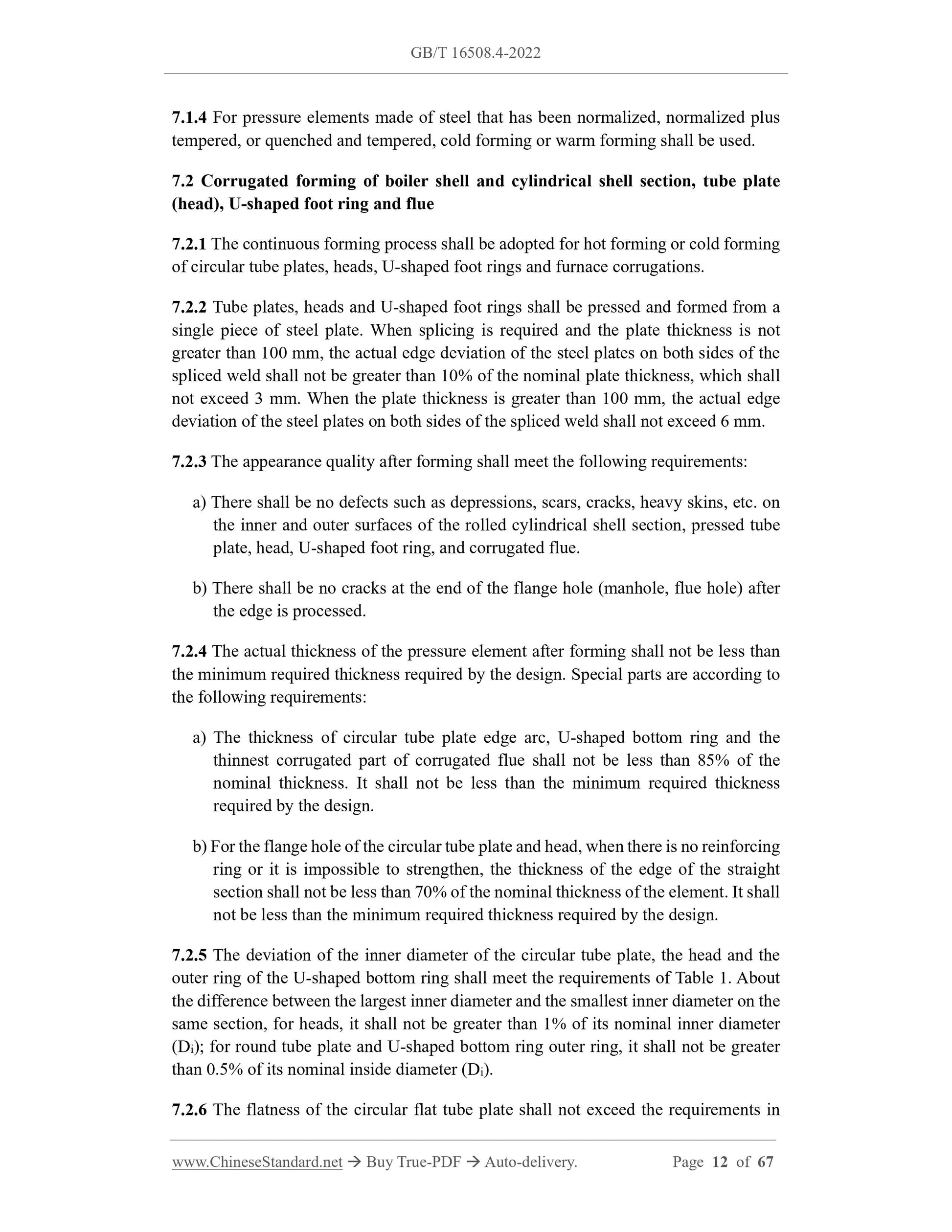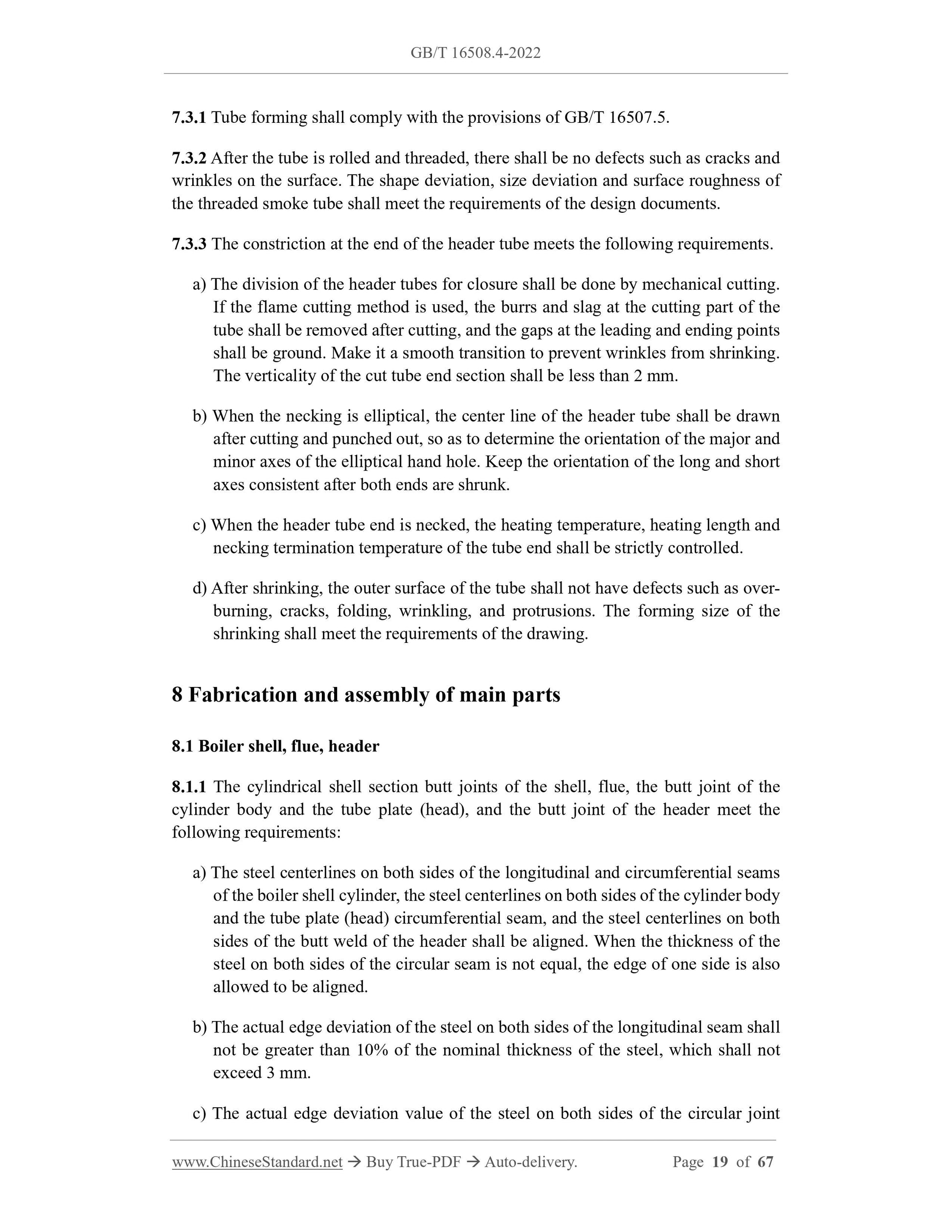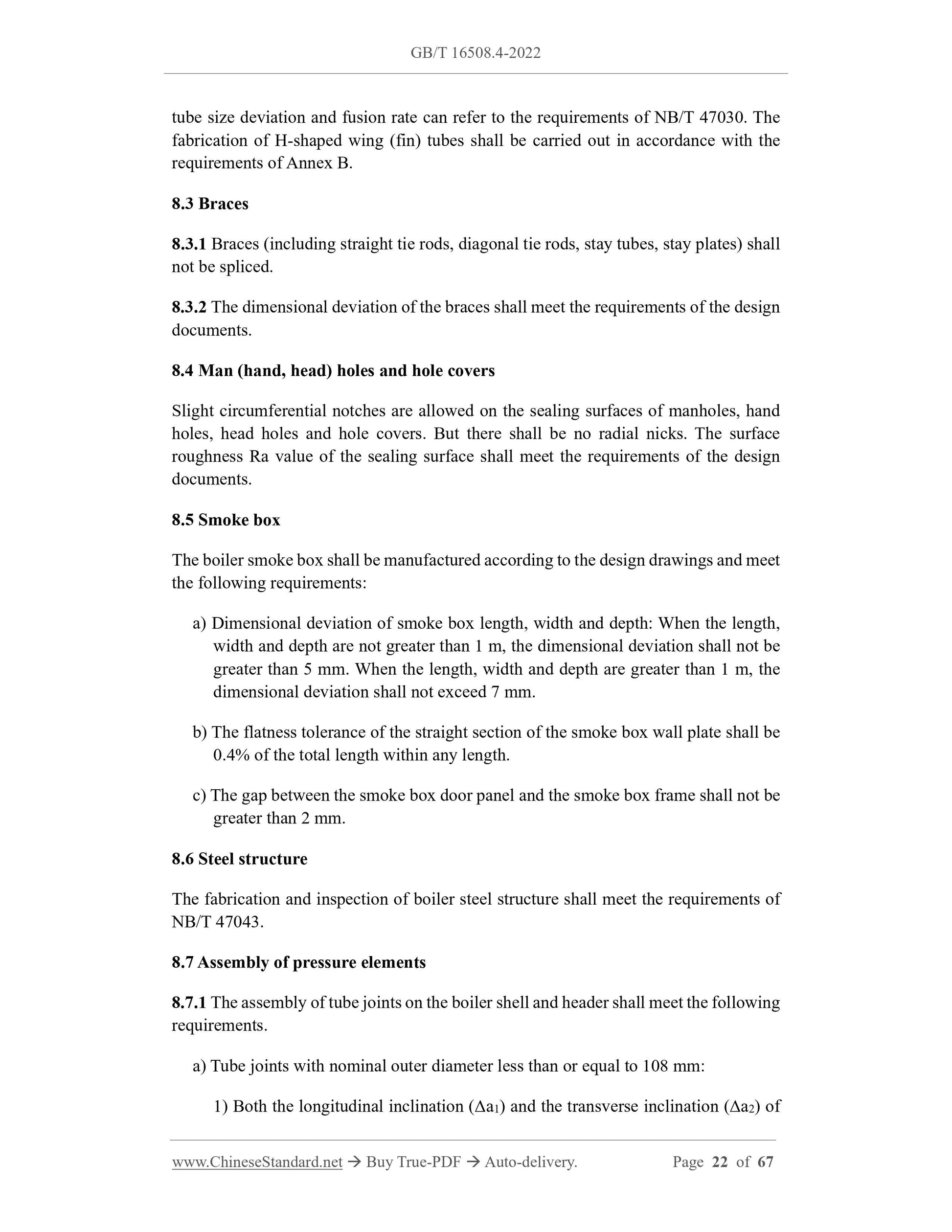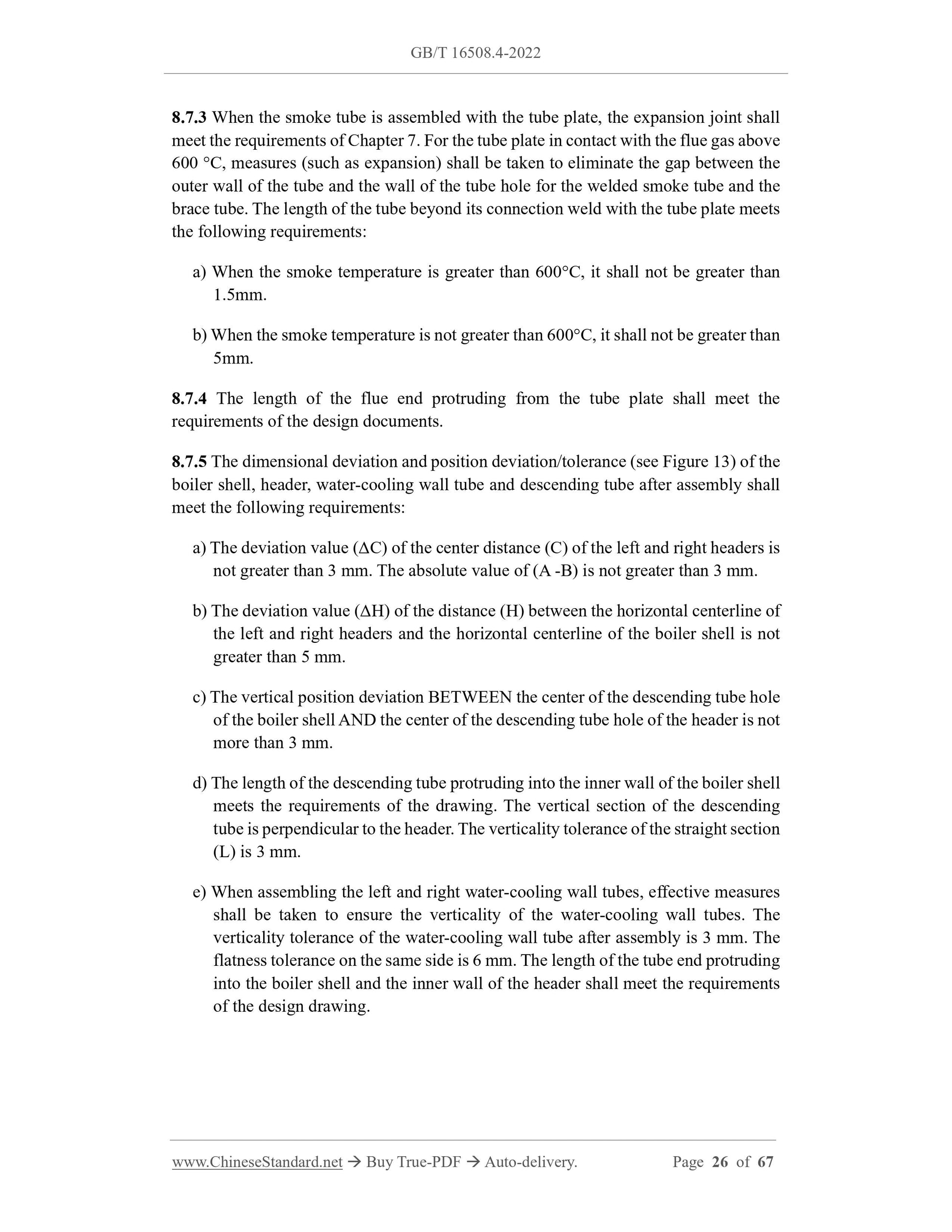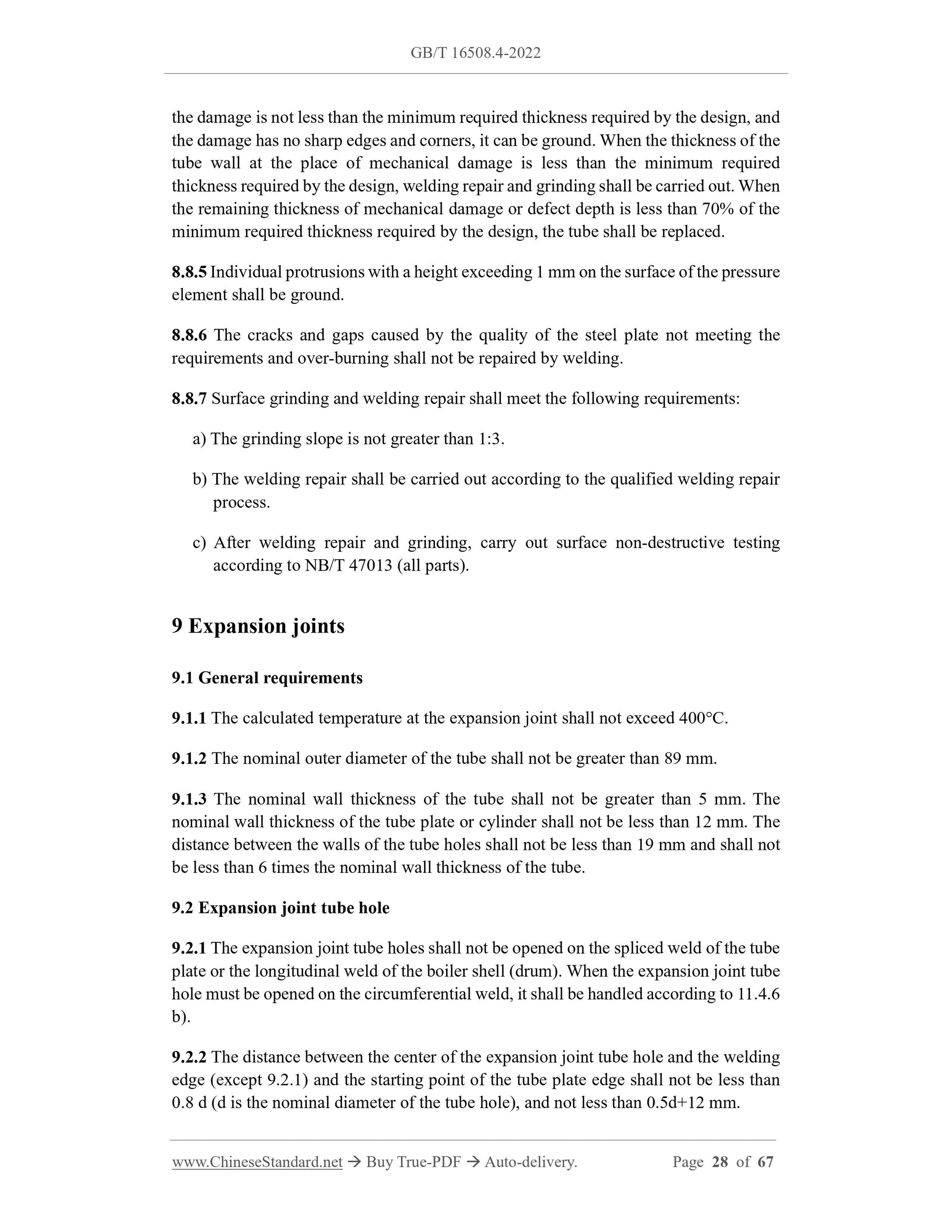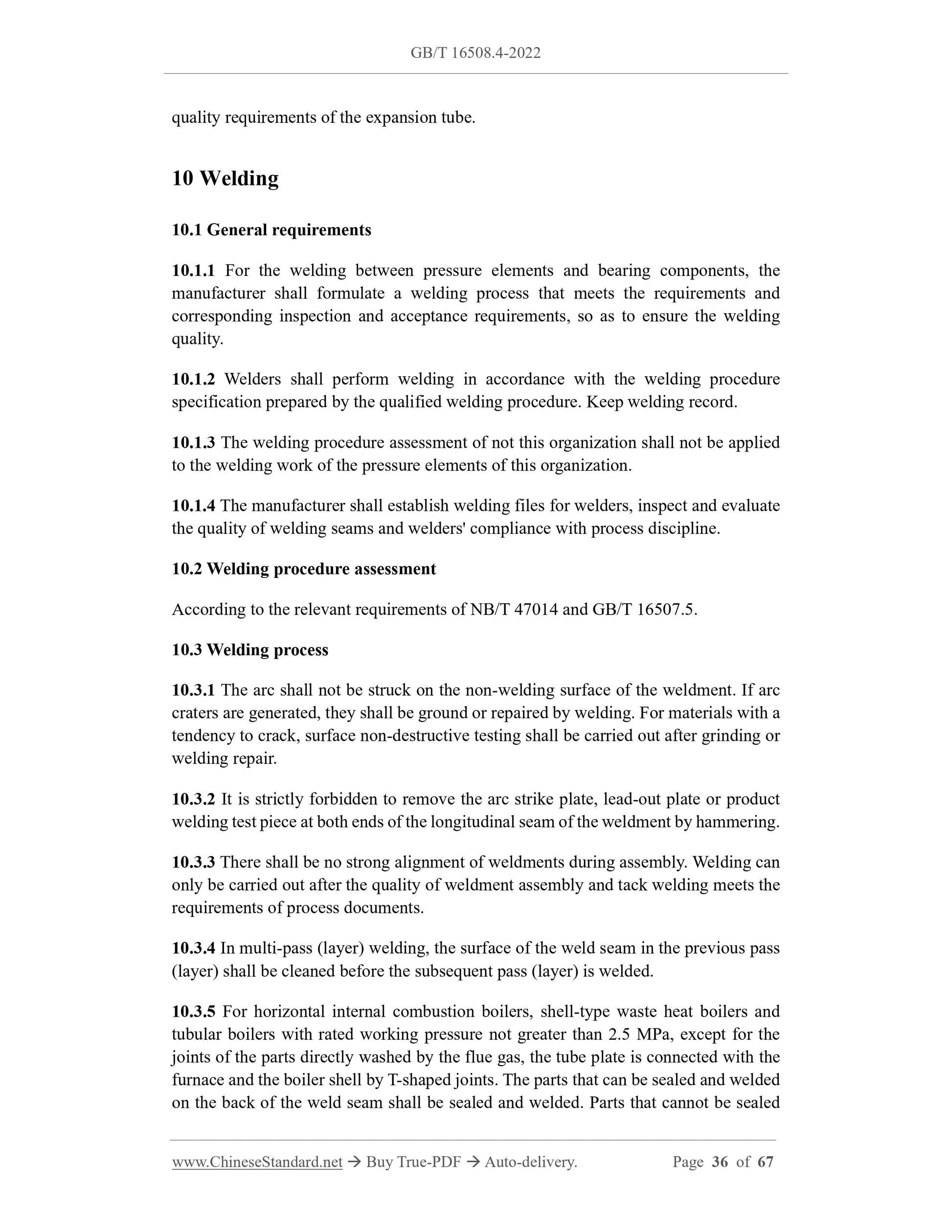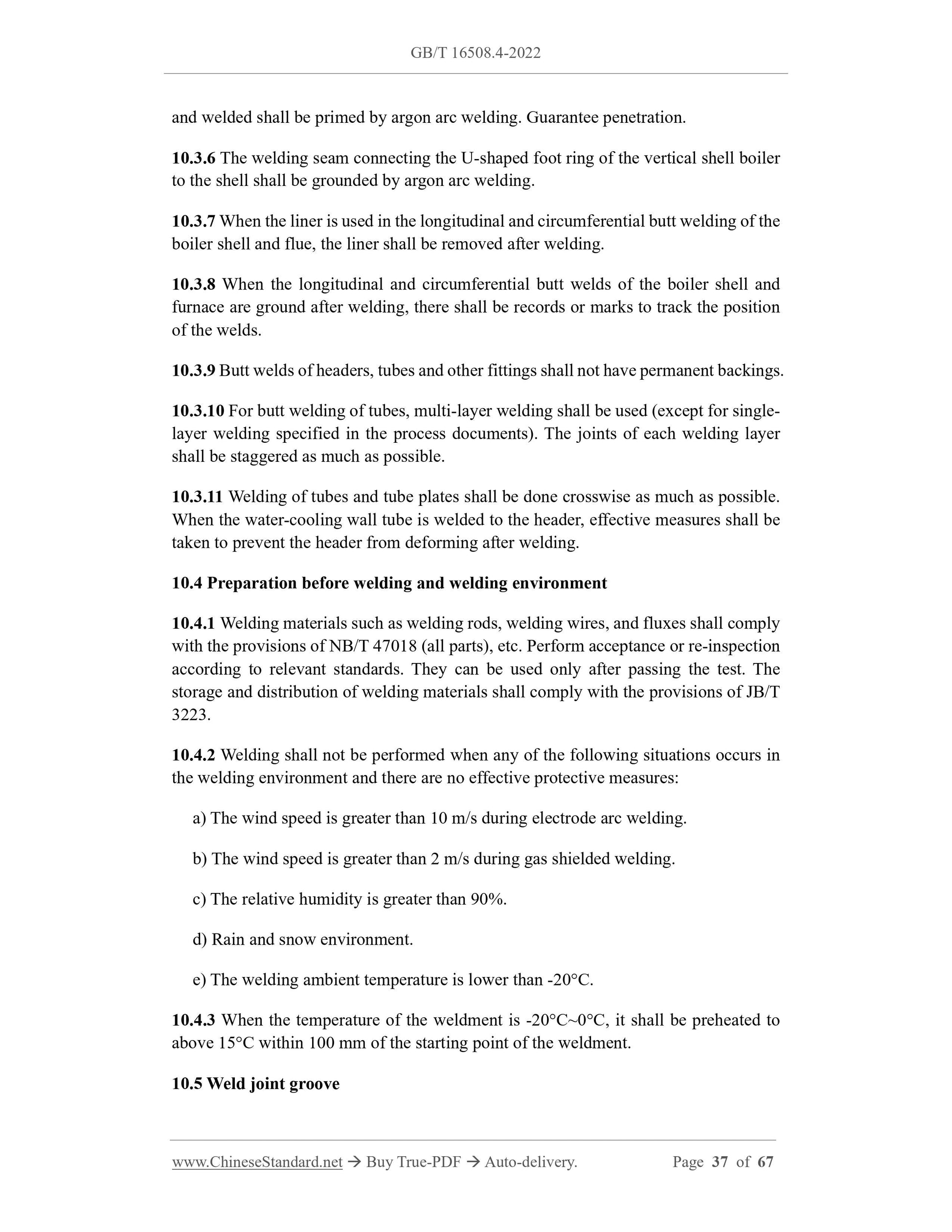1
/
of
12
www.ChineseStandard.us -- Field Test Asia Pte. Ltd.
GB/T 16508.4-2022 English PDF (GB/T16508.4-2022)
GB/T 16508.4-2022 English PDF (GB/T16508.4-2022)
Regular price
$650.00
Regular price
Sale price
$650.00
Unit price
/
per
Shipping calculated at checkout.
Couldn't load pickup availability
GB/T 16508.4-2022: Shell boilers - Part 4: Fabrication, inspection and acceptance
Delivery: 9 seconds. Download (and Email) true-PDF + Invoice.Get Quotation: Click GB/T 16508.4-2022 (Self-service in 1-minute)
Newer / historical versions: GB/T 16508.4-2022
Preview True-PDF
Scope
This document specifies the basic requirements for shell boilers in the fabricationprocess, marking, material cutting and straightening, hot and cold forming, fabrication
and assembly of main parts, expansion joints, welding, heat treatment, inspection and
testing, coating and packaging, nameplates and the requirements for the exit-factory
data.
This document is applicable to the fabrication, inspection and acceptance of shell
boilers defined in GB/T 16508.1.
Basic Data
| Standard ID | GB/T 16508.4-2022 (GB/T16508.4-2022) |
| Description (Translated English) | Shell boilers - Part 4: Fabrication, inspection and acceptance |
| Sector / Industry | National Standard (Recommended) |
| Classification of Chinese Standard | J98 |
| Word Count Estimation | 46,448 |
| Issuing agency(ies) | State Administration for Market Regulation, China National Standardization Administration |
Share
